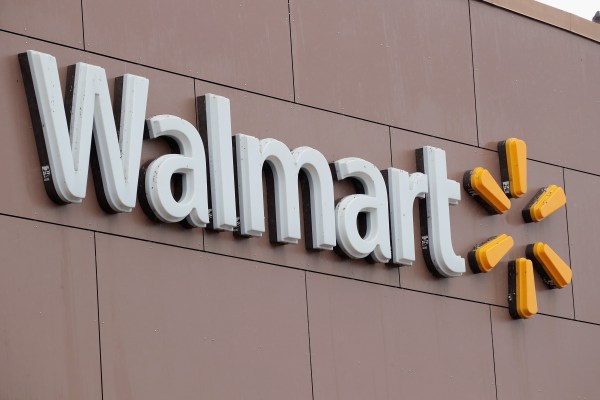Walmart’s investments in e-commerce, including online grocery delivery and pickup, are continuing to pay off for the retailer. In the company’s Q2 earnings, released this morning, Walmart reported its U.S. e-commerce sales were up 97% — an increase attributed to more customers shopping online during the pandemic, stocking up on household supplies and shopping for grocery items online.
Today, Walmart offers grocery pickup at 3,450 locations and same-day delivery at 2,730 stores. Since February, it has expanded time slots by 30% to help meet consumer demand.
Overall, the company also benefited in the quarter from the impact of U.S. consumers’ government stimulus checks. As those stimulus funds ran out, sales began to normalize. But Walmart’s July comparable sales still grew by more than 4%, the company noted.
Walmart’s online marketplace also got a boost from the larger e-commerce bump, with sales up by a triple-digit percentage.
In addition, Walmart’s U.S. same-store sales were up 9.3% in the retailer’s fiscal second quarter, led by strength in general merchandise and food. Walmart president and CEO Doug McMillon also noted the retailer saw strong sales in categories like TVs, computing devices and connected home — sales that also have ties to the pandemic, which is forcing people to spend more time at home. He also said some consumers continued to stockpile items in coronavirus hotspots, like cleaning supplies, which were still often out-of-stock. Both cleaning supplies and paper goods (e.g. TP and paper towels) led Walmart’s consumable sales in the quarter.
The overall rise in grocery orders, meanwhile, can be partially attributed to the pandemic’s impacts and not just the ease of shopping for grocery items online. As more people have been cooking meals at home instead of dining out at restaurants, their grocery orders have also increased. Walmart said both grocery pickup and delivery saw “all-time high sales volumes” in the quarter.
The pandemic has been changing how consumers shop, too, the company pointed out. Instead of regular trips to the store, consumers now shop less frequently but buy more during each trip. Combined with the shift to e-commerce, that led to a 27% increase in comparable average ticket sizes in the quarter, while comparable transactions dropped 14%.
On the earnings call, McMillon briefly confirmed Walmart’s plans to introduce a membership service, as had been previously reported. The company is said to be working on its own alternative to Amazon Prime, dubbed Walmart+. But the launch has been repeatedly delayed, Vox recently reported. According to the CEO, Walmart has been testing the delivery component to the membership service since last year with its “Delivery Unlimited” program, which the company referred to as “a great base of an offer” for a broader membership program.
We have been testing membership with delivery on limited subscription since late last year,” McMillon said. “That customer offer was limited to a grocery and consumables delivery service as the reason to sign up. Since that launch, we have proven to ourselves that we can pick and deliver a broad set of categories across the super center not just food and consumables, but a wide assortment of general merchandize. We think that assort breath and our ability to deliver with speed nationally combined with a few other benefits for customers will result in a compelling proposition,” he added.
Today, Delivery Unlimited subscribers pay either $12.95 per month or $98 per year to order groceries online from Walmart.com without a per-order fee. Walmart+, however, will reportedly include other perks, like gas discounts and special product deals.
McMillon didn’t speak to the specifics of its service, saying instead that Walmart will have more to offer when it’s ready to talk about it.
Overall, Walmart beat on earnings in the quarter, with revenue of $137.74 billion, topping estimates of $135.48 billion. Earnings per share came in at $1.56 adjusted, versus the expected $1.25. Net income also rose year-over-year to $6.48 billion, or $2.27 per share, up from $3.61 billion, or $1.26.
